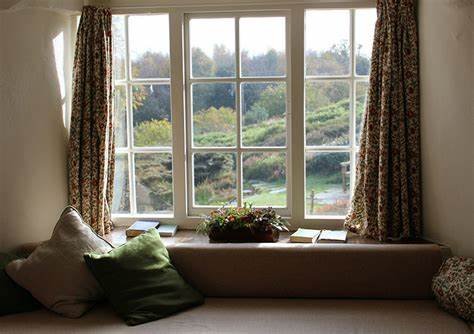Windows are an essential architectural element of any building, providing natural light, ventilation, and views of the surrounding environment. In recent years, there has been a surge in innovative window design trends that prioritize both aesthetics and functionality. From energy-efficient materials to minimalist frames and smart technologies, the latest trends in window design offer homeowners and architects exciting opportunities to enhance the beauty and performance of their spaces. In this article, we’ll explore some of the latest trends in window design and discuss their impact on the residential and commercial building industry.
Energy-Efficient Materials and Technologies
1. High-Performance Glass
Advancements in glass technology have led to the development of high-performance glass coatings that improve energy efficiency and comfort. Low-emissivity (low-E) coatings, for example, help control heat transfer through windows, reducing energy consumption for heating and cooling.
2. Triple Glazing
Triple glazing, which consists of three layers of glass separated by insulating spaces, offers superior thermal performance compared to traditional double-glazed windows. This extra layer of insulation helps minimize heat loss and external noise, creating a more comfortable indoor environment.
3. Insulated Frames
In addition to high-performance glass, insulated window frames made from materials such as vinyl, fiberglass, or composite materials help reduce heat transfer and improve energy efficiency. These frames are durable, low-maintenance, and resistant to warping, rotting, and corrosion.
Minimalist and Contemporary Designs
1. Slim Profiles
Minimalist window designs with slim profiles and clean lines are gaining popularity in modern architecture. These sleek and understated windows maximize natural light and views while complementing contemporary interior and exterior aesthetics.
2. Floor-to-Ceiling Windows
Floor-to-ceiling windows create a seamless connection between indoor and outdoor spaces, flooding interiors with natural light and providing expansive views of the surrounding landscape. These dramatic windows add visual interest and a sense of openness to any room.
3. Corner Windows
Corner windows, which wrap around building corners to create panoramic views, are becoming a signature feature in contemporary architecture. These unique windows maximize daylighting and offer uninterrupted views of the outdoors, blurring the boundaries between inside and outside.
Smart Technologies and Automation
1. Motorized Window Treatments
Motorized window treatments, such as automated blinds or shades, offer convenience and flexibility in controlling natural light and privacy levels. These smart solutions can be programmed to open and close at specific times of the day or in response to changing weather conditions.
2. Integrated Sensors
Integrated sensors in windows can detect changes in temperature, humidity, and air quality, allowing for automatic adjustment of ventilation and shading systems. This proactive approach to building management enhances occupant comfort and energy efficiency.
3. Dynamic Glazing
Dynamic glazing technologies, such as electrochromic or thermochromic glass, allow windows to change tint or opacity in response to external conditions. This adaptive shading system helps regulate daylighting, solar heat gain, and glare, improving indoor comfort and reducing energy consumption.
Personal Narrative: My Experience with Innovative Window Design
As a homeowner with a passion for design and sustainability, I recently embarked on a window replacement project to upgrade the outdated windows in my home. After extensive research and consultation with an architect, I opted for triple-glazed windows with insulated frames and low-E coatings to maximize energy efficiency and comfort.
I also embraced minimalist design principles, choosing floor-to-ceiling windows and corner windows to capitalize on natural light and panoramic views of the surrounding landscape. To enhance convenience and functionality, I integrated motorized window treatments and smart sensors to automate shading and ventilation control.
Forward-Looking Analysis: Future Directions in Window Design
Looking ahead, we can expect to see continued innovation and evolution in window design, driven by advancements in materials, technologies, and sustainable practices. Future trends may include the integration of renewable energy systems, such as photovoltaic or solar thermal panels, into window glazing to generate electricity or heat for buildings.
Conclusion
The latest trends in window design are transforming the way we think about windows, elevating them from functional elements to architectural statements that enhance both aesthetics and performance. From energy-efficient materials and minimalist designs to smart technologies and automation, innovative window solutions offer homeowners and architects unprecedented opportunities to create spaces that are beautiful, comfortable, and sustainable. By embracing these trends and incorporating them into their projects, designers and homeowners can unlock the full potential of windows as integral components of modern buildings.


